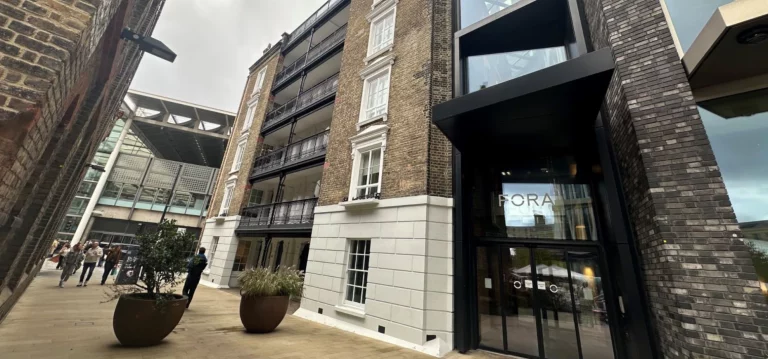The landscape of modern construction is undergoing a profound transformation, driven by technological integration and an unwavering commitment to safety. At the heart of this evolution is a category of machinery once defined solely by its brute force: excavation equipment. The industry’s shift towards intelligent machinery is exemplified by forward-thinking manufacturers, who are integrating advanced technologies directly into their equipment. Today’s excavators, bulldozers, and loaders are no longer simple mechanical tools, but sophisticated, connected systems that are fundamentally reshaping how projects are planned, executed, and completed. The role of this advanced equipment is pivotal in creating a future for the construction industry that’s more efficient and cost-effective, and significantly safer for the workforce and the public. Here’s the role of excavation equipment in smarter, safer construction. The Shift from Muscle to Mind Historically, construction was a labor-intensive industry where the power of heavy machinery was its primary asset. While powerful, these machines relied almost entirely on the skill and constant vigilance of their operators. Modern excavation equipment, however, has integrated intelligence that augments human capability. Advanced hydraulics can provide finer control, reducing jerky movements and enabling precise grading and trenching. Telematics systems collect and transmit real-time data on machine health, location, fuel consumption, and utilization. This data allows project managers to optimize fleet deployment, schedule proactive maintenance before a costly breakdown occurs, and ensure that the right machine is in the right place at the right time. Furthermore, the shift from reactive to predictive management is a cornerstone of smarter construction, saving both time and financial resources. The pursuit of smarter machinery is intrinsically linked to enhanced safety, with manufacturers leading the charge by offering equipment equipped with stability management systems and advanced operator assist features. These technologies are critical safety interventions that protect both the operator and the worksite. Lastly, construction companies that are looking for advanced excavation equipment may also consult with reputable providers like Kocurek Excavators to gain more valuable insights and make informed decisions. Enhancing On-Site Safety Through Technology Safety is the most critical metric on any construction site, and modern excavation equipment, such as skid steer excavators, and crawler excavators directly contributes to its improvement through several key technological advancements. These include: 360-Degree Camera Systems and Object Detection Blind spots are a leading cause of construction accidents involving heavy machinery. High-definition cameras can provide operators with a complete, real-time view of their immediate surroundings, displayed on monitors within the cab. Furthermore, radar and ultrasonic sensors can detect personnel, obstacles, or other equipment in the machine’s path, issuing visual and audible warnings to the operator and, in some advanced systems, automatically applying brakes or limiting movement. Grade Control and Anti-Collision Systems GPS and GNSS technology, once the domain of surveyors, is now integrated directly into excavators and bulldozers. Operators can work from a digital 3D model of the final design, with the machine systems automatically controlling the blade or bucket to achieve the exact grade, depth, or slope required. This can eliminate guesswork, reduce rework, and prevent accidents related to trench collapses or unintended utility strikes. Similarly, anti-collision systems on sites with multiple machines can create virtual zones that prevent booms or arms from entering restricted spaces. Operator-Centric Cab Design The modern operator cab is an ergonomic command center. Climate control, reduced noise levels, and customizable suspension seats can reduce operator fatigue, a significant factor in human error. Intuitive, multi-function joystick controls and touchscreen interfaces can minimize distraction, allowing the operator to maintain focus on the task at hand. The Data-Driven Jobsite The intelligence of individual machines is amplified when they’re part of a connected ecosystem. Excavation equipment now serves as a primary data node on the jobsite. Telematics and integrated sensors feed a constant stream of information to a central platform, providing an unprecedented level of project visibility. Managers can also monitor progress against the project timeline in near real-time, track material movement, and ensure that excavation is occurring precisely according to the Building Information Modeling (BIM) data. This connectivity can facilitate better communication between the office and the field, enabling data-driven decision-making that streamlines the entire construction process from excavation to foundation and beyond. The Future is Autonomous The logical progression of this technological integration is the development of fully autonomous or semi-autonomous excavation systems. While widespread adoption is still on the horizon, prototypes and early commercial applications are already demonstrating their potential. These machines can perform repetitive, predefined tasks, such as digging a foundation to exact specifications, with superhuman precision and consistency, 24 hours a day. This can help boost productivity and remove human operators from the most hazardous environments, such as unstable ground, sites with dangerous materials, or disaster response scenarios. The role of the human worker evolves from direct machine operation to supervision, management, and maintenance of an automated fleet. Key Takeaway The role of excavation equipment in construction has been fundamentally redefined. It has transitioned from being a simple tool of earthmoving to a sophisticated, intelligent partner in building. By keeping the information mentioned above in mind, the construction industry is poised to achieve unprecedented levels of efficiency, accuracy, and, most importantly, safety. The continued evolution of this machinery promises a future where projects are completed faster, within budget, and with a safety record that was once thought impossible.








